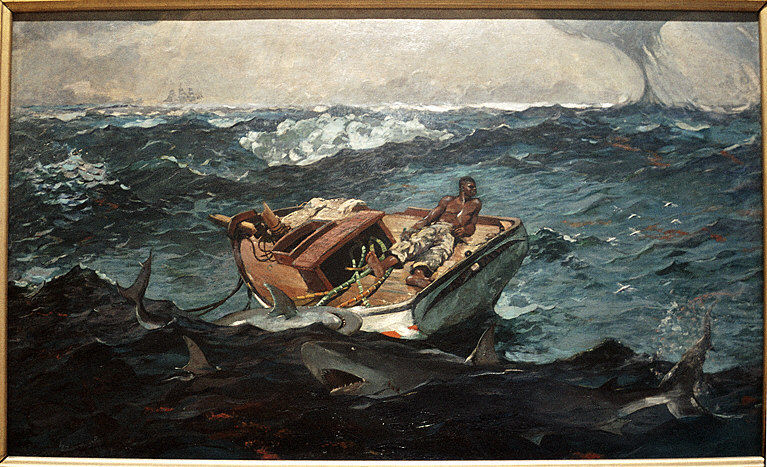
HOMER, Winslow (1836-1910 USA)
71.1x124.5 cm
United States, New York, Metropolitan Museum of Art
This seascape shows a black sailor on a boat that has lost its mast in stormy and shark-infested waters. A distant ship offers the possibility of rescue, but the man is looking in precisely the opposite direction. The boat itself contains two grimly symbolic shapes: a black cross near the bow; and a dark tomb-shaped hatch leading below (the hatch is actually referred to as a "tomb" in Herman Melville's Moby Dick). Homer himself had traveled through the Gulf Stream to the Caribbean, but this image owes as much to a well-known nineteenth century painterly tradition of boats in distress, for example, Theodore Gericault's Raft of the Medusa (1818-1819) and Thomas Cole's The Voyage of Life: Manhood (1842). When seen in relation to such earlier works, Homer's painting addresses larger themes of human struggle and isolation and the indifference of nature. Because the Gulf Stream is a river-like current within the ocean, the title "The Gulf Stream" points to the archetypal association of a river (for example, in Cole's paintings and in Twain's Huckleberry Finn) with a life journey. In portraying a black man as representative of the human condition, Homer is clearly rejecting the more common tendency toward racial stereotyping in the nineteenth century. In his repeated portrayals of people or animals struggling for existence against an indifferent natural world, Homer shares the concerns of literary naturalism as it appears in the works of Stephen Crane and Jack London (see Cikovsky and Kelly 369-70, 382-83; Stephen Koja 124).